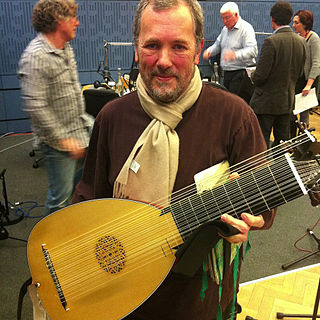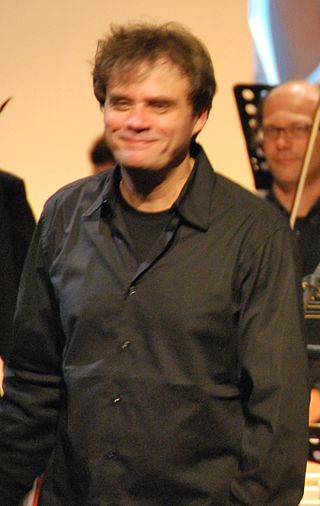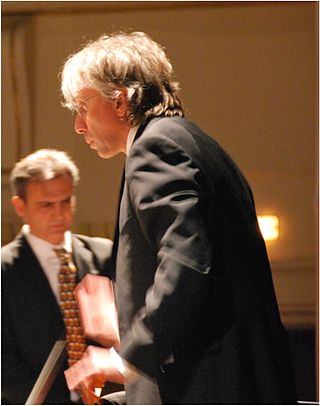
A lute is any plucked string instrument with a neck and a deep round back enclosing a hollow cavity, usually with a sound hole or opening in the body. It may be either fretted or unfretted.

The viol, viola da gamba, or informally gamba, is any one of a family of bowed, fretted, and stringed instruments with hollow wooden bodies and pegboxes where the tension on the strings can be increased or decreased to adjust the pitch of each of the strings. Frets on the viol are usually made of gut, tied on the fingerboard around the instrument's neck, to enable the performer to stop the strings more cleanly. Frets improve consistency of intonation and lend the stopped notes a tone that better matches the open strings. Viols first appeared in Spain in the mid-to-late 15th century, and were most popular in the Renaissance and Baroque (1600–1750) periods. Early ancestors include the Arabic rebab and the medieval European vielle, but later, more direct possible ancestors include the Venetian viole and the 15th- and 16th-century Spanish vihuela, a six-course plucked instrument tuned like a lute that looked like but was quite distinct from the four-course guitar.
Hille Perl is a German virtuoso performer of the viola da gamba and lirone. She is considered to be one of the world's finest viola da gamba players, specializing in solo and ensemble music of the 17th and 18th centuries. She has a particular interest in French Baroque repertoire for seven-string bass viola da gamba. She also performs Spanish, Italian, German, and modern repertoire for the instrument and has released many CDs.
The archlute is a European plucked string instrument developed around 1600 as a compromise between the very large theorbo, the size and re-entrant tuning of which made for difficulties in the performance of solo music, and the Renaissance tenor lute, which lacked the bass range of the theorbo. Essentially a tenor lute with the theorbo's neck-extension, the archlute lacks the power in the tenor and the bass that the theorbo's large body and typically greater string length provide.

Il Giardino Armonico is an Italian ensemble well noted for its practice of Historically Informed Performance and founded in Milan in 1985 by Luca Pianca and Giovanni Antonini, primarily to play 17th- and 18th-century music on period instruments.

Robert Barto is an American lutenist specializing in the music of the Baroque and Empfindsamkeit periods, in particular the oeuvres of Sylvius Leopold Weiss and Bernhard Joachim Hagen.

Roman Turovsky-Savchuk is an American artist-painter, photographer and videoinstallation artist, as well as a lutenist-composer, born in Ukraine. His musical works were published under various pseudonyms, including Johann Joachim Sautscheck.
The Harp Consort is an international early music ensemble directed by Andrew Lawrence-King, specialising in Baroque opera, early dance-music, and historical World Music.

Vittorio Ghielmi is an Italian musician, conductor, compose Compared by critics to Jasha Heifetz ("Diapason") for his virtuosity, and described as "An Alchemist of sound" for the intensity and versatility of his musical interpretations, Vittorio Ghielmi attracted notice while still very young for his new approach to the viola da gamba and to the sound of early music repertoire. He is Professor for viola da gamba and Head of the Department für Alte Musik at the Mozarteum Universität Salzburg and visiting professor at the Royal College of London. He is graduate at the Università Cattolica di Milano.

Nigel North is an English lutenist, musicologist, and pedagogue.
Johannes Schenck was a Dutch musician and composer.
The Diapason d'Or is a recommendation of outstanding (mostly) classical music recordings given by reviewers of Diapason magazine in France, broadly equivalent to "Editor's Choice", "Disc of the Month" in the British Gramophone magazine.
Lorenzo Ghielmi is an Italian organist and harpsichordist.

Ottavio Dantone is an Italian conductor and keyboardist particularly noted for his performances of Baroque music. He has been the music director of the Accademia Bizantina in Ravenna since 1996.
Rolf Lislevand, is a Norwegian performer of Early music specialising on lute, vihuela, baroque guitar and theorbo.
Markku Luolajan-Mikkola is a Finnish baroque cellist and viol player. Born in Helsinki, he studied cello with Arto Noras at the Sibelius Academy, where he received his diploma in 1983. Later, an interest in baroque music led him to summer courses with Laurence Dreyfus, and afterwards he went on to Royal Conservatory of The Hague where he studied viola da gamba with Wieland Kuijken and baroque cello with Jaap ter Linden, receiving postgraduate diplomas in viola da gamba and baroque cello in 1992.

Giovanni Antonini is an Italian conductor and soloist on the recorder and baroque transverse flute. He studied in his native Milan, and attended the Civica Scuola di Musica in that city and the Centre de Musique Ancienne in Geneva. In 1985, along with Luca Pianca, he co-founded Il Giardino Armonico, a pioneering Italian early music ensemble based in Milan.
Martha Elizabeth Blackman was an American viola da gamba player and lutenist, and the first American to perform on and teach the viol.

Massimo Marchese is an Italian musician, lutenist, theorbist and recording artist.

Enrico Onofri is an Italian violinist and conductor specialising in Baroque music.










